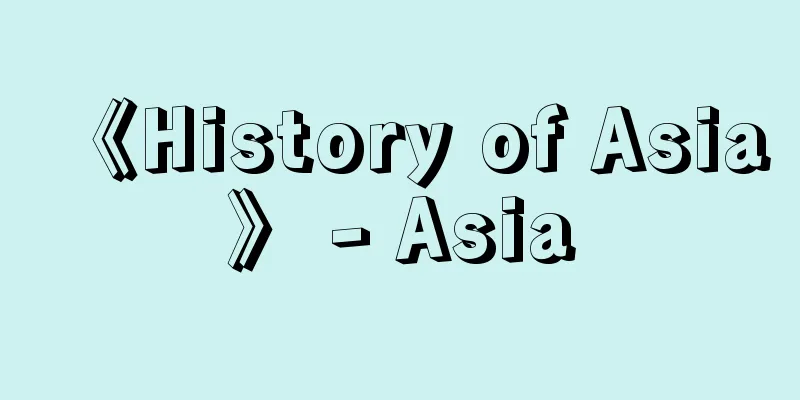Seikanron - Seikanron

|
At the beginning of the Meiji period, arguments for the invasion of Korea were made both inside and outside the Japanese government. After Toyotomi Hideyoshi's failed invasion of Korea, the Tokugawa Shogunate tried to establish diplomatic relations with Korea, but from the mid-Edo period onwards, the tendency to despise Korea gradually grew among Confucian and Japanese classical literature scholars, and at the end of the Edo period, when Japan was under pressure from Western countries, arguments also emerged that Japan should attack Korea to make up for the losses caused by that pressure. The proponents of this argument also took the descriptions in the Nihon Shoki as historical facts, believed that Japan had ruled Korea in ancient times as well, and sought to "revive" that rule. When the Meiji government was established, the argument for the invasion of Korea went beyond mere wishful thinking and became one of the foundations of the government's foreign policy, against the backdrop of the domestic and international political and economic situations it faced. From December 1868 (Meiji 1) to the following spring, when the Boshin War had not yet ended, diplomatic negotiations with Korea had not yet begun, and therefore there had been no pretext for the invasion of Korea, let alone any "disrespect" on the part of Korea, but government leaders such as Iwakura Tomomi and Kido Takayoshi were already plotting an invasion of Korea. They inherited the ideological argument for the invasion of Korea from the end of the Tokugawa shogunate, and on top of that, they aimed to direct the dissatisfaction of the samurai class after the establishment of the new government outward, and to invade Korea in order to obtain political, economic, and psychological compensation for the oppression by Western countries. At that time, King Gojong's father, Yi Hae-eung, held real political power in Korea as Daewongun, and in foreign policy he was vehemently opposed to the invasion of Western countries, and also strongly opposed the establishment of diplomatic relations with Japan, regarding it as a "foreign traitor." So, Saigo Takamori and others strongly advocated for sending an envoy to Korea while Iwakura and others were dispatched to Europe and America, and they themselves became the envoy and tried to resolve the situation. This was in 1873. However, when Iwakura, Kido, Okubo Toshimichi and others returned to Japan in the autumn of the same year, they argued for prioritizing domestic affairs, and came into conflict with Saigo and others, and the councilors who supported the expedition to Korea, including Saigo, left the government. However, Okubo and others were not opposed to the invasion of Korea. The following year, they dispatched troops to Taiwan, and in 1875 they dispatched Japanese warships to provoke the Ganghwa Island Incident, which led to the imposition of the Treaty of Amity and Commerce between Japan and Korea (Ganghwa Treaty) on Korea in 1876, which was an unequal treaty that was disadvantageous to both sides, and opened a breakthrough for the invasion of Korea. From then on, Japan's political and economic invasion of Korea intensified with each passing year, and the idea of a "Seikanron" (the theory of conquering Korea) became increasingly prevalent in Japanese thought. Korea was lost from an objective perspective, and the aftereffects of this continue to linger to this day. [Akira Nakatsuka] "Japanese Militarism II" by Kiyoshi Inoue (1953, University of Tokyo Press) " "A Study of the Political Crisis of 1873" by Toshihiko Mori (1978, Yuhikaku) Source: Shogakukan Encyclopedia Nipponica About Encyclopedia Nipponica Information | Legend |
|
明治の初め日本政府の内外で展開された朝鮮侵略の主張。豊臣(とよとみ)秀吉の朝鮮侵略の失敗後、徳川幕府は朝鮮との修交に努めたが、江戸時代中期以降、儒学、国学の学者たちの間で朝鮮侮蔑(ぶべつ)の傾向がしだいに強まり、欧米諸国の圧迫を受けた幕末には、その圧迫による損失を朝鮮を攻めて補うべしという議論も台頭してきた。こうした議論の主唱者たちは、また『日本書紀』の記述をそのまま歴史的事実とし、古代にも日本は朝鮮を支配していたと考え、その「復活」を目ざした。明治政府が成立すると、征韓論はただ希望的な議論にとどまらず、政府の直面した内外の政治的、経済的状況を背景に、政府の対外政策の根幹の一つとなった。まだ戊辰(ぼしん)戦争も終わらない1868年(明治1)12月から翌春にかけて、朝鮮との国交交渉も緒につかず、したがって朝鮮の「無礼」はもとより、征韓の口実となることは、朝鮮側からはなにひとつ起こっていないにもかかわらず、早くも岩倉具視(ともみ)や木戸孝允(たかよし)ら政府首脳らによって朝鮮侵略が画策された。彼らは幕末の征韓論を思想的に受け継ぎ、そのうえに新政権成立後の士族の不満を外に向け、かつ朝鮮を侵略することによって、政治的、経済的、心理的な諸方面で、欧米諸国による圧迫の代償を得ようとしたのであった。当時、朝鮮では国王高宗の父、李昰応(りかおう)が大院君として政治の実権を握り、対外政策では欧米諸国の侵入に激しく反対し、日本も同じく「洋賊」であるとして、国交を開くことに強く反対していた。そこで西郷隆盛(たかもり)らは、岩倉らが欧米に派遣されている間に、朝鮮への使節の派遣を強硬に主張し、自らその使節となり、事態の打開を計ることを主張した。1873年のことである。しかし、岩倉や木戸、大久保利通(としみち)らが同年秋に帰国すると、彼らは内治の先決を唱えて西郷らと対立、西郷ら征韓派の参議は政府を去った。しかし大久保らも朝鮮侵略に反対ではなかった。翌年台湾に出兵し、75年には日本軍艦を派遣して江華島(こうかとう)事件を挑発し、それを契機に76年には、朝鮮に一方的に不利な不平等条約である日朝修好条規(江華条約)を押し付け、朝鮮侵略に突破口を開いた。これ以後、政治的、経済的に日本の朝鮮侵略は年とともに強まり、日本人の思想のなかに征韓論的発想はますます増幅され、客観的に朝鮮をみる目が失われ、その後遺症は現在まで尾を引いている。 [中塚 明] 『井上清著『日本の軍国主義Ⅱ』(1953・東京大学出版会)』▽『毛利敏彦著『明治6年政変の研究』(1978・有斐閣)』 出典 小学館 日本大百科全書(ニッポニカ)日本大百科全書(ニッポニカ)について 情報 | 凡例 |
>>: Ch'ŏngamni‐p'aesa (English name)
Recommend
Apraxia - Apraxia
This refers to a state in which a person is unable...
Autogestion
…These are issues of separation of powers in the ...
Chondromyces
…Individual cells are slightly curved rod-shaped ...
Mr. Onodera - Onodera Uji
A group of warriors from the Middle Ages. Their an...
Kibana Tochikagami - Kibana Tochikagami
…The flowers last only one day, but bloom one aft...
Emperor Wanli
The 14th Emperor of the Ming Dynasty, China (reig...
Kim Yun-sik
A politician in the final years of the Yi Dynasty...
Krieck, Ernst
[Born] 1882 [Died] 1947 German pedagogue. Leader o...
Reuchlin, Johannes
Born: February 22, 1455 in Pforzheim [Died] June 6...
External hardness - External hardness
This is an argument that emphasizes the restorati...
Iwai Island
An island in the southeastern part of Yamaguchi P...
Greenglass, D.
...This incident triggered a search in the United...
Shrimp Clasp - Shrimp Clasp
…The function of a fastener is determined by its ...
Chengzi-ya Ruins - Chengzi-ya Ruins
This is a reference site for the Longshan culture ...
Stone retaining wall - Ishizumiyoheki
...A wall-like structure built to resist earth pr...






![Anabuki [town] - Anabuki](/upload/images/67cad6b2adb6c.webp)


